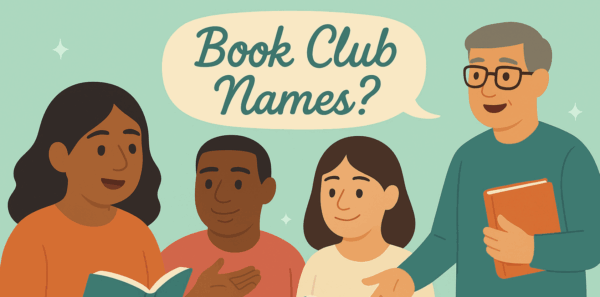Imagine reading a novel where the narrator knows everything—what every character thinks, feels, and plans, even when they’re miles apart. Now, that’s a superpower we can all appreciate. Welcome to the world of storytelling, where the narrator has an all-encompassing understanding of every event and every character. It’s like having a guide who knows the plot and holds the secrets to each character’s inner life.
The omniscient narrator is often the invisible hand that steers the story, giving the author the freedom to dive into every corner of the world they’ve created. Whether you’re exploring ancient battlefields, modern cities, or the deepest recesses of a character’s psyche, the narrator has a front-row seat to it all.
But how does it work? And why do writers choose to use this approach instead of sticking to a more intimate, single-character perspective? In this article, we’ll explore the ins and outs of this narrative style—from its definition and examples to how it shapes storytelling, making it as important as the plot itself. So, buckle up, because you’re about to take a whirlwind tour of the narrative world where everything is known.
What is an Omniscient Narrator? A Deep Dive into the Definition
At its core, an all-knowing narrator is the ultimate know-it-all of the literary world. This narrator isn’t limited to the perspective of just one character or a single moment in time; instead, they possess an all-encompassing knowledge of the entire story. To understand the omniscient narrator definition, imagine a bird’s-eye view of a sprawling landscape, where every detail, every thought, and every twist of the plot is visible to the narrator.
So, what does this all-knowing narrator know? Everything. They are aware of not only the physical actions and events unfolding in the story but also the inner workings of each character’s mind—thoughts, desires, regrets, and motivations. This allows the narrator to hop from character to character, scene to scene, and even period to period, offering readers a panoramic view of the narrative world.
This is where the third-person omniscient point of view comes into play. Unlike first-person narration, where the story is told from one character’s limited perspective, or third-person limited, where the narrator only knows what one character knows, the all-knowing narrator is free to explore the inner lives of everyone involved. If a character is thinking about their next move, the narrator knows it. If a character is hiding a secret, the narrator is in on it. It’s like having access to all the spoilers at once—if only they weren’t so expertly woven into the narrative!
In short, an omniscient narrator isn’t just a storyteller; they’re the puppet master pulling the strings, guiding us through the plot with unrivaled knowledge and insight.
The Third Person Omniscient: The Power of Perspective
The third-person omniscient narrator provides a distinct and powerful perspective, allowing the storyteller to know everything. Unlike first-person or third-person limited viewpoints, where the story is confined to one character’s thoughts, this narrator has full access, seeing every character’s inner world, actions, and even details beyond their immediate view.
This perspective enables the narrator to shift effortlessly between characters and settings, offering a comprehensive view of the story. Want to understand the hero’s thoughts during a tense moment? The narrator can take you there. Curious about other characters making plans in a distant location? No problem—the narrator can seamlessly transition to them.
The strength of the third-person omniscient lies in its versatility. It allows writers to reveal important information, weave together multiple storylines, and add layers of suspense. Essentially, it offers readers a “bird’s-eye view” of the entire narrative world, making it an invaluable tool for storytelling.
Omniscient Narrator Examples: How Authors Use This Style
To better understand how the omniscient narrator works, let’s look at some notable omniscient narrator examples from literature. This narrative style allows authors to explore multiple characters’ thoughts and emotions, revealing a deeper, more complex world. Here’s how different authors use it:
- War and Peace by Leo Tolstoy
Tolstoy gives readers access to a wide range of characters, from aristocrats to soldiers, providing insight into their thoughts, motivations, and struggles. This approach allows him to blend intimate character development with sweeping historical events. For example, while we follow Pierre’s inner turmoil, we’re also shown the grand scale of the Napoleonic wars. The narrator doesn’t just give us one perspective; instead, we understand the broader forces at work and the internal conflicts of multiple characters, creating a rich, multi-dimensional narrative. - Middlemarch by George Eliot
In Middlemarch, George Eliot explores the lives of a large cast of characters. Through this style, she provides insight into their inner lives, dreams, and moral dilemmas, often showing readers what they’re unable to see themselves. For instance, we’re able to understand Dorothea Brooke’s noble aspirations and the secrets of characters like Mr. Casaubon. The narrator allows Eliot to offer commentary on social and political issues while diving into the complex relationships between characters. This is a great example of how the all-knowing narrator lets an author weave together multiple storylines and perspectives. - The Lord of the Rings by J.R.R. Tolkien
J.R.R. Tolkien manages the vast and complex world of The Lord of the Rings. Through this perspective, we not only get a sense of Frodo and Aragorn’s journeys but also glimpse into the minds of secondary characters like Gandalf, Gollum, and even Sauron. This allows Tolkien to build a richly layered world where the stakes aren’t just personal but global. This helps shift focus from one character or group to another, providing essential context and creating a sense of a larger, interconnected world.
These examples of omniscient narrators can be used to craft complex plots, develop characters with depth, and provide readers with a wider perspective of the story’s world. Whether delving into personal emotions, uncovering hidden motivations, or presenting the broader context, this narrative style enables authors to enhance their storytelling in meaningful ways.
Your Publishing Journey Awaits – Start NowWhy Writers Choose the Omniscient Narrator: Benefits and Drawbacks
The all-knowing narrator is a powerful tool for writers, but it comes with both advantages and challenges. Here’s why many writers choose this narrative style, along with some potential drawbacks.
Benefits:
- Full Access to Characters’ Minds
The all-knowing narrator gives readers insight into multiple characters’ thoughts and motivations, creating a deeper understanding of everyone in the story. - Flexibility in Storytelling
This perspective allows authors to shift between characters, time periods, and locations easily, making it ideal for complex, multi-layered narratives. - Building Suspense and Foreshadowing
The narrator’s all-knowing nature lets writers subtly foreshadow events, building tension and keeping readers on the edge of their seats.
Drawbacks:
- Risk of Overwhelm
The wealth of information the all-knowing narrator provides can overwhelm readers if not balanced well, making it hard to focus on the main plot. - Emotional Distance
While offering broad insights, the all-knowing narrator can sometimes create emotional distance, preventing readers from fully connecting with a single character. - Potential for Confusion
Switching between characters’ perspectives can confuse readers if the transitions aren’t clear, especially in stories with a large cast.
Overall, while the omniscient narrator offers great flexibility, it requires careful handling to avoid overwhelming or detaching the reader. When used well, it brings depth and richness to a story.
How to Master the Third Person Omniscient Point of View in Your Writing
Using the third-person omniscient narrator effectively can elevate your storytelling, but it requires careful technique. Here are some tips for mastering this powerful narrative style:
1. Balance the Focus
While the all-knowing narrator allows you to explore the minds of multiple characters, it’s important not to jump between too many perspectives too quickly. Focus on a few key characters in each scene, and shift perspectives only when necessary to drive the story forward. This helps maintain clarity and keeps the reader engaged.
2. Maintain Consistent Voice
The all-knowing narrator should have a consistent voice throughout the story. This voice may be neutral, humorous, philosophical, or even ironic, but it should never feel disjointed or inconsistent. The key is to maintain a tone that fits the story and enhances the narrative.
3. Use Subtle Foreshadowing
The ability to reveal future events and use subtle foreshadowing to build suspense. Dropping small hints about a character’s fate or a major plot twist keeps readers intrigued and creates anticipation. However, be careful not to give too much away too soon—leave just enough mystery to keep the readers hooked.
4. Show, Don’t Tell
Even though the omniscient narrator knows everything, try to avoid “telling” the reader too much. Instead, show characters’ emotions, thoughts, and motivations through actions and dialogue. This helps to create a stronger connection between the reader and the characters while still leveraging the narrator’s broad knowledge.
5. Avoid Overloading the Reader
With the omniscient narrator, it’s easy to overwhelm the reader with too much information. Avoid overloading your audience with excessive backstory or unnecessary details. Instead, provide just enough context to keep the story moving forward while allowing readers to fill in the gaps.
Mastering the third-person omniscient point of view takes practice, but when used correctly, it can add incredible depth and richness to your writing. By balancing perspective, maintaining a consistent voice, and carefully managing the flow of information, you can create a compelling narrative that keeps readers hooked from beginning to end.
Conclusion: The Timeless Appeal of the Omniscient Narrator
The omniscient narrator has stood the test of time, proving itself to be a versatile and powerful storytelling tool. From classic works like War and Peace to modern epics like The Lord of the Rings, this narrative style allows authors to create deep, intricate stories where readers gain access to the thoughts, emotions, and motivations of every character. It offers a panoramic view of the narrative world, enabling writers to seamlessly weave together multiple perspectives and complex plotlines.
While it requires careful handling to avoid overwhelming the reader, the third-person omniscient point of view allows for rich character development, intricate foreshadowing, and suspenseful storytelling. For writers seeking to build a world with depth and complexity, this approach remains a timeless choice.
So, whether you’re crafting your next novel or exploring the nuances of literary style, consider the omniscient narrator definition and its unique ability to bring a story to life from every angle. The possibilities are endless, and the rewards are well worth the effort.
FAQs – Omniscient Narrator
Q1: What is an example of an omniscient narrative?
A classic among omniscient narrator examples is War and Peace by Leo Tolstoy. The novel uses an all-knowing narrator who reveals the thoughts, feelings, and motivations of all the characters, allowing the reader to experience multiple perspectives within the same story.
Q2: What are the three types of narrators?
The three main types of narrators are:
First-person narrator: The story is told from the perspective of a character within the story using “I” or “we.”
Second-person narrator: This rare style addresses the reader directly with “you.”
Third-person narrator: The story is told from an outside perspective, and can be further divided into limited (focused on one character’s thoughts) and omniscient (knows all characters’ thoughts and events).
Q3: What makes a narrator omniscient?
An omniscient narrator has knowledge of all characters, events, and settings in a story. This type of narrator can access the thoughts, emotions, and backstories of every character and can provide insights into multiple perspectives simultaneously.
Q4: Is Harry Potter written in the 3rd person?
Yes, the Harry Potter series is written in third-person limited, not omniscient. While the narrator focuses on Harry’s experiences and thoughts, the perspective is mostly limited to what Harry knows and feels in each moment, without fully diving into the minds of other characters.
Q5: What pov is Pride and Prejudice written in?
Pride and Prejudice by Jane Austen is written in third-person omniscient. The narrator has access to the inner thoughts of multiple characters, allowing the reader to see the world from different perspectives, especially those of Elizabeth Bennet and Mr. Darcy.
Q6: Can an omniscient narrator be biased?
Yes, even though an omniscient narrator knows everything, they can still be biased. The narrator’s tone, language, and the selection of details can reflect personal opinions or preferences, shaping how the reader perceives characters or events in the story.
Q7: What type of narrator is Dickens?
Charles Dickens often uses a third-person omniscient narrator in his works. His narrators provide detailed insights into characters’ thoughts, feelings, and actions, and often comment on social issues and the broader human condition, which adds depth and moral perspective to his stories.
Q8: Is there a first-person omniscient narrator?
While rare, a first-person omniscient narrator is possible. In this case, the narrator tells the story from their own perspective but claims to have knowledge of everything that happens, including the thoughts and experiences of other characters. This is a less common narrative style, as it blurs the traditional distinction between first-person and omniscient perspectives.








